 Is poor memory a serious problem for you? In this post, we help you with highly useful memory techniques.
Is poor memory a serious problem for you? In this post, we help you with highly useful memory techniques.
Are you a person who forgets almost everything you learn within a few days afterwards? Is bad memory seriously hindering your progress? If yes, don’t worry.
This article is for you! By applying the memory techniques in this article, you can significantly boost your memory power.
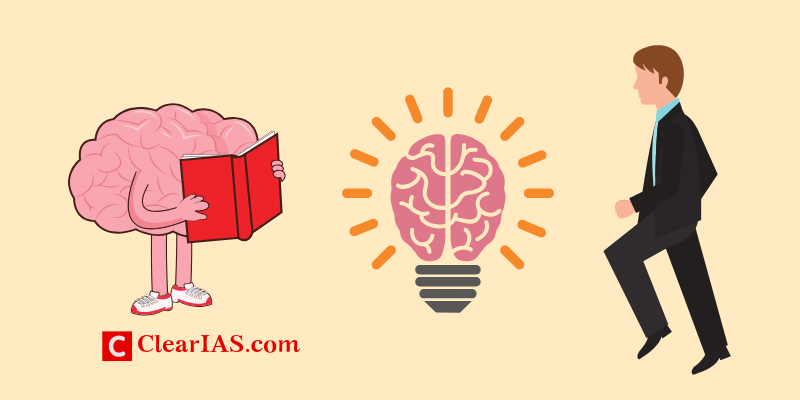
Yes, you can practically remember almost anything!
While most people forget things they learn within a few days, some have an exceptional memory. Have you ever come across such people?
A Walking Encyclopedia?

A walking encyclopedia is someone with an awe-inspiring knowledge of diverse subjects and topics. The moment someone asks him (or her) any question about anything, the questioner will get the right answer from him (or her) with proper facts.
How is this possible?
All walking encyclopedias have super memory power!

First and foremost, all persons known in their circles as ‘walking encyclopedias’ have an amazing memory!
Many IAS officers, scientists, and teachers are walking encyclopedias (not all!). They are good not only in storing facts but also are able to process the data to come up with excellent analysis.
Their memory is so powerful that they are able to retain and retrieve so much of information, at ease.
Your memory is poor because you were learning the wrong way!

If you are not able to retain what you learned after a few days, there may be a fundamental problem in your learning. You might be attending a lot of classes or reading a pile of books, but you were not storing information effectively.
You are not alone.
Most people retain only 21% of what they learn, after 30 days!
That’s means about 80% of the effort you put to learn is lost in a matter of a month! A great loss!
However, this loss can be minimised, if you practise memory techniques discussed in this article.
Do you wish to be a ‘walking encyclopedia’ – someone with an impressive knowledge of diverse subjects?

Believe me, if you really wish so, you can.
Memory is all about how you learn. Your memory power depends on how you train your brain.
33 Memory Techniques To Remember Anything
In this article, I shall explain 33 highly useful memory tips to boost your memory power. Memorizing is easy if you apply these mnemonic techniques (tricks to help remember facts or a large amount of information using rhymes, acronym, images etc).
1. The Big Picture Technique – Learn from the General to the Specific

Don’t start memorizing whatever you see, hear, or read. Understand the larger context.
Learn from the general to the specific.
Step back and look at the big picture. Make the topic meaningful.
For example, if you happen to hear about Sungas or Kanvas in Indian History, don’t try to cram it directly. Rather try to see the complete picture.
Which period of Indian History are they associated with? Is it ancient India, medieval India, or modern India?
It’s Ancient India, right?
Once you fix this into your mind, picturise the time period of Sungas and Kanvas from the Chronology of Indian history. If you look at the chronology, you can easily understand that Sunga and Kanva are post-Mauryan Kingdoms (or middle kingdoms) – Sunga (181-71 BC) and Kanva (71-27BC).
If you start learning with this general background (bigger picture) in mind, you will comprehend it better. Further, the concept will stay in your memory for longer. The big picture technique is useful not only for History but also for all subjects like Geography, Polity, Economics etc.
2. The Filtering Technique – Figure out what is important

Each second, you feed a lot of things into your brain. When you read, write, see, hear, touch – there are a lot of inputs. Are all these important enough to allocate your brain space?
The art of memory is the art of selecting what to remember in the first place. There is no need to remember an old password, which you changed 5 years ago 🙂
You should forget unimportant things to focus on the important things. In fact, there are situations in which forgetting helps you learn (and memorize).
3. The Organizing Memory Technique – Store the information effectively

Organized information is easier to find.
For example, events in History can be organised in chronological order. Provisions in the Indian Constitution can be memorized by organizing it into articles and parts, just like the way the constitution is written.
Also, don’t just read, understand. Unless that happens, you won’t really retain much.
4. The ‘Create Interest’ Technique – Be genuinely interested in the subject you study
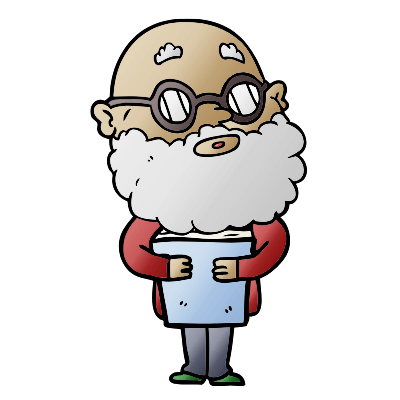
You will naturally absorb more in the areas of your interest.
Which subjects excite you? What are the subjects that you don’t like much? Analyse why you don’t like such subjects?
Is it because of the teacher or his way of presentation? Or, is it because you missed the basic classes that advanced topics are now difficult to grasp?
The most important tip to generate interest in any subject is to relate what you study with your daily life. Engaging your emotions will also help.
For example, when you study the exchange rate and its connection with exports and imports in Economics, connect it with what you eat or drink. In the above link, we have connected it with the price of an apple, so that it’s quite easy to understand.
5. The Cornerstone Memory Technique – Get the basic idea first
It is always easy to learn a new subject if you have some basic idea about it. That’s the reason why we at ClearIAS always stress the importance of building fundamental concepts.
If your fundamentals are weak, spend some time to build the basics.
Start from school texts whenever possible. School texts, in general, are written in the most lucid language without losing the essence of complex concepts. Most of the ClearIAS online study materials are also simple and easy-to-learn.
6. The Connection Mnemonics Technique – Create associations

Associate new data with the already recorded data in your brain. I remember a lot of things by linking it with other stuff.
Sometimes you need to deliberately create associations.
For example, suppose that you have a colleague called Sherley. You keep forgetting her name, resulting in embarrassment whenever you meet her.
However, you have noticed that she has curly hair.
That’s the connection!
Next time, when you see her, connect curly hair with ‘Sherley’. You won’t forget!
7. The Model Mnemonics Technique – Create models, charts, mind maps etc.
Model Mnemonics is all about understanding a complex thing using a model. In a Model Mnemonic, some type of model representation is constructed to understand and recall important information.
Don’t you remember how you studied the Nitrogen cycle? It was represented using a circular sequence model, right? This is an example of model mnemonics.
Circular sequence models, pyramid models, pie charts, box sequences, and even mind maps are examples of model mnenomics.
Right from the beginning, ClearIAS has been using model mnemonics in our online study materials. We always include models (mind maps, charts, images) in our notes to make learning simple and easy.
Links to some of our online study materials, where this technique is effectively used:
- Dimensions of Ethics – Easy to Learn Infographics
- Attitude – Concepts Made Simple; With Examples
- Geomorphic Processes and Earth Movements
8. Phrase Mnemonics Technique – Create a Phrase Using the First Letter of Keywords

How do you remember the names of the nine planets? Just use the first letter of the planets and create an interesting phrase which is easy to remember. This technique is also known as acrostics, crosswords, word mnemonics or expression mnemonics.
An acrostic is an invented sentence where the first letter of each word is a cue to an idea you need to remember. See the example below
- Mercury, Venus, Earth, Mars, Jupiter, Saturn, Uranus, Neptune, and Pluto – “My very excellent mother just served us nine pizzas“.
Is it easy for anyone who studies biology to remember the order of taxonomy – Kingdom, Phylum, Class, Order, Family, Genus, and Species? It’s difficult unless you have some trick with you. Here is the phrase you should remember.
- Kingdom, Phylum, Class, Order, Family, Genus, Species – “King’s Palace Can Order For Great Spices!”
Physics students who study stars have to remember the spectral classification of stars. Most stars are currently classified using the letters O, B, A, F, G, K, and M, a sequence from the hottest (O type) to the coolest (M type).
- O, B, A, F, G, K, and M – tough to learn? I bet, you will find no difficulty to learn the mnemonic for this – “Oh Be a Fine Girl, Kiss Me”.
Additional Tip: In the online age, you can find a software tool for almost everything. And we found an online mnemonics generator as well. If you don’t have a creative mind to invent new acrostics, this acrostics generator can take care of that. Just enter your keywords, it will create an easy-to-remember phrase for you! Just Sit back! Relax!
9. Rhyme Mnenomics Technique – Create a poem linking the common items
Which all months have 30 days, and which have 31? How do you remember that?
Haven’t you memorised the below mnemonic before? If not, you can thank us later. More to come.
Thirty days hath September,
April, June, and November;
All the rest have thirty-one
Excepting February alone:
Which hath but twenty-eight, we find,
Till leap year gives it twenty-nine.
The Rhyme mnemonics technique is also known as ode mnemonics.
10. Music Mnemonics Technique – Give a music tune to what you want to memorize
We have already seen what how useful can a rhyming mnemonic be. A related technique is music mnemonic – this is to convert what we what to memorize into a piece of music. Or, just give a musical tune to what you are trying to remember.
I don’t need to stress the power of music. Most people remember the lyrics of songs better than prose. It’s easy to learn and remember the music. For example, many children learn ABC’s by singing the “ABC” song.
Music Mnemonics work best with long lists.
11. Acronym Mnenomics Technique – Create An Acronym for the Keywords

The brain prefers short chunks of data than the long ones. So create acronyms when you need to remember a lot of things.
Let us give you some examples.
- How should you remember the Great Lakes in America – Huron, Ontario, Michigan, Erie, and Superior? Use the acronym – HOMES. Yes, it’s as easy as that!
- Finding it difficult to remember the names of Great Mughal rulers – Babur, Humayun, Akbar, Jahangir, Shah Jahan, Aurangzeb, and Bahadur Shah I in the chronological order? Just remember the shortcode – BHAJSAB
- Colours of the rainbow? I know you already know this – Violet, Indigo, Blue, Green, Yellow, Orange, Red. How did you learn this? What was the acronym used? It is VIBGYOR.
- If you are a biology student, you should have studied the stages of mitosis (cell division) – Prophase, Metaphase, Anaphase, and Telophase. I still remember how my teacher explained this with an acronym. Her acronym was P-MAT, and it is super-easy!
12. Note Organization Mnemonics Technique – Note Making Boosts Recall

If there is a proper organisation in your notes, that will boost learning. In the sense that the organization of notes can promote recall, it is a memory device (mnemonic).
Three examples of organizing note formats that promote recall are as follows:
- Notecards – Notecards are an easy way to organize main ideas and relevant details to be recalled. If main ideas are formatted into possible test questions, notecards can give learners practice in seeing questions and recalling answers as they must do on exams.
- Outlines – Outlines clearly separate main ideas from details. This helps organize the information in the mind making it easier to remember.
- Cornell System – The Cornell System is another way to use a Note Organization Mnemonic to promote recall. A vertical line is drawn 3 inches from the left margin of the notebook paper. Main ideas or questions from them are placed to the left of the line and details or answers placed to the right.
13. Spelling Mnemonics Technique – Don’t confuse spellings anymore

Spelling mnemonics are intended to help us remember the spelling of words. Here is an example of a spelling mnemonic:
- A principal at a school is your pal,
and a principle you believe or follow is a rule. - Another commonly used Spelling Mnemonic is combined with a Rhyme Mnemonic.
i. I before e except after c
or when sounding like a
in neighbour and weigh
14. Image Mnemonics Technique – Invent a mental picture

The information in an image mnemonic is constructed in the form of a picture that promotes recall of information when you need it.
For example, can use an image mnemonic ‘bat’ to remember BAT (the depressant drugs – Barbiturates, Alcohol, and Tranquilizers). Visualize or sketch in your notes a limp, depressed bat that took Barbiturates, Alcohol, and Tranquilizers.
15. The Chunking Technique – Break and Club items together
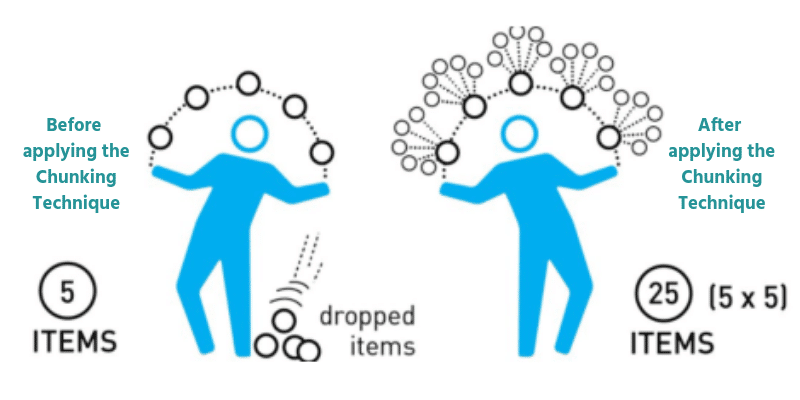
The chunking technique can help us get past this limitation: Group several items into a larger whole.
Studies like “The Magical Number Seven, Plus or Minus Two” have suggested that the short-term memory of adult humans can hold only a limited number of items (around 7).
However, grouping items into larger chunks such as in a mnemonic might be part of what permits the retention of a larger total amount of information in short-term memory, which in turn can aid in the creation of long-term memories.
For example,
how do you remember the phone number 18001801503?
Break it into chunks.
1800-180-1503
Is it easy to remember now?
ClearIAS has extensively used the Chunking Technique in our notes. Just see our downloads section, browse each subject like History, Geography, Polity, Economics etc and see how we chunked a lot of topics into a limited number of modules (chunks).
16. Use the Memory Palace Technique – Connect Memory Peg with what you want to remember

This is also called the Method of Loci. A ‘Memory Palace’ is a metaphor for any well-known place that you’re able to easily visualize. It can be the inside of your home, or maybe the route you take every day to work. That familiar place will be your guide to store and recall any kind of information.
Memory Palace technique works with the use of visual associations. The process is simple: you take a known image — called the memory peg — and combine with the element you want to memorize. For us, each memory peg is a distinctive feature of our Memory Palace.
If you are wondering how to use this technique, refer to this website for demonstration.
17. The Distributed Learning Technique – Use Intervals

Don’t study at a stretch for long hours, unless you are thoroughly enjoying the process. In general, marathon study sessions are not effective. You can get far more done in three two-hour
sessions than in one six-hour session.
Use your times of peak energy.
Study when your energy levels are high.
Study your most difficult subjects during the times when your energy peaks. Many people can concentrate more effectively during daylight hours. The early morning hours can be especially productive, even for those who hate to get up with the sun. Observe the peaks and valleys in your energy flow during the day and adjust study times accordingly.
18. The Active Learning Technique – Engage your body
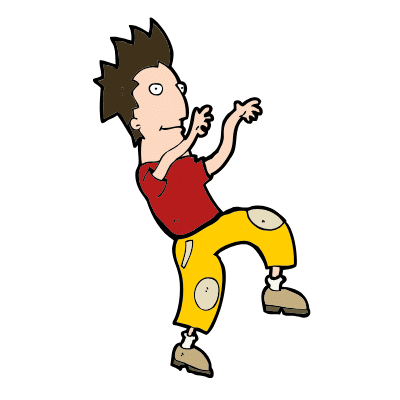
Get your whole body in studying. Experiment sitting, standing, walking, reading out loud etc. Be active.
19. The Reading Technique – Go multiple rounds

If you are learning a new topic, don’t try to learn everything in one go. Go in 2-3 rounds.
In the first round, glance through the headings, words in bold, sidenotes, introduction, and summary. Underline what you think as important. This would help you get a basic idea and interest in the topic you are about to learn.
In the 2nd round, read the entire article in full. Create notes on the important concepts or ideas discussed.
In the 3rd round, revise the text again – focussing on your notes, headings of the chapter, summary, and any questions given at the end of the chapter.
20. The Recitation Technique – Use the power of repetition

When you repeat something out loud, you anchor the concept in two different senses. First, you get the physical sensation in your throat, tongue, and lips when voicing the concept. Second, you hear it. The combined result is synergistic, just as it is when you draw pictures. That is, the effect of using two different senses is greater than the sum of their individual effects.
Repeat a concept out loud until you know it, then say it five more times.
Recitation works best when you recite concepts in your own words
Try talking to yourself the concepts you learned, when alone – while walking or when in the shower. Recitation and repetition are really powerful. Try it.
21. The Drawing Technique – Post Charts and Maps on Your Walls

Draw diagrams. Make charts, maps, and cartoons. Use them to connect facts and illustrate relationships.
Now there many maps and charts are available to buy online. To boost your visual memory, all you need to do is to buy these and to paste on an area of your wall to see it often. Links to buy some of the charts are given below.
- Constitution Of India Wall Chart
- Indian History Wall Chart
- World Map (Political)
- India Map (Political)
- India Map (Physical)
22. The Writing Technique – Pen it down, many times

Writing a note to yourself helps you remember an idea, even if you never look at the note again.
Write down an idea not one time, but many times.
Repetition is the key here too.
23. The Self Quizzing Technique – Take Exams
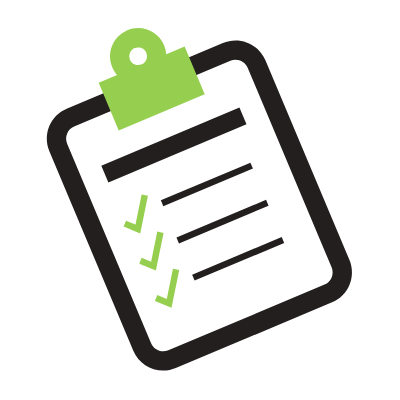
Test your progress from time to time by using self-quizzing techniques, and keep analyzing your performance.
Exams are excellent tools not only to test your knowledge but also to improve your recall and retention. That’s why ClearIAS has integrated learning with test-taking in our mock exam platform.
We strongly recommend all UPSC aspirants to take ClearIAS mock exams, right from the time you begin IAS exam preparation. You can take free and paid mock exams for UPSC Civil Services Exam from this link.
24. The Debating Technique – Take part in discussions

Take part in debates. Though most debates are formal discussions on a particular matter in a public, you can take part in private debates with your friends or colleagues as well.
Logical consistency, factual accuracy and some degree of emotional appeal to the audience are elements in debating.
The degree of learning and retention from a debate is very high.
25. The Teaching Technique – Take Classes

Teaching is revision done 10X.
To teach a subject you should understand the subject well, analyse it, and able to explain the same to others (your students) in a manner they can understand.
You will soon become an expert in the topics you teach. Undoubtedly, teaching is a memory bolstering activity.
Teach diverse subjects multiple times. Aim to shift what you want to memorize into your long-term memory.
26. The Combination Technique – Use different senses together
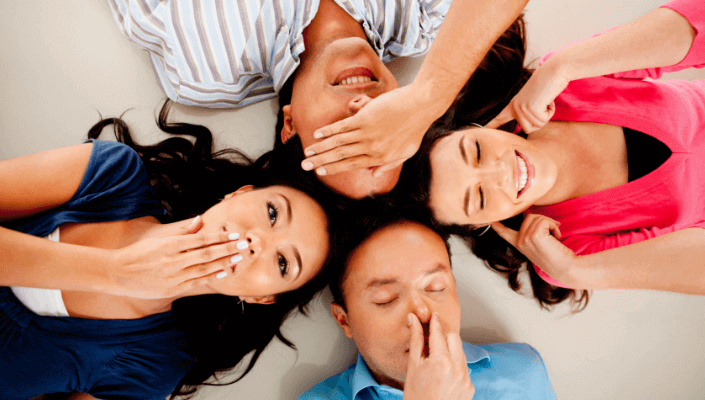
Understand what you remember most – what you read, seen, heard, or done?
Everyone has a different memory style. Some people are best at recalling information they’ve read. Others remember best what they’ve heard, seen, or done.
Get the facts, and adjust your learning techniques.
Combining memory techniques is combining sight, sound, and touch when you study. The effect is synergistic.
Draw, Recite, and, Write.
27. The Memory-Boosting Activity Technique – Give your secret brain a chance
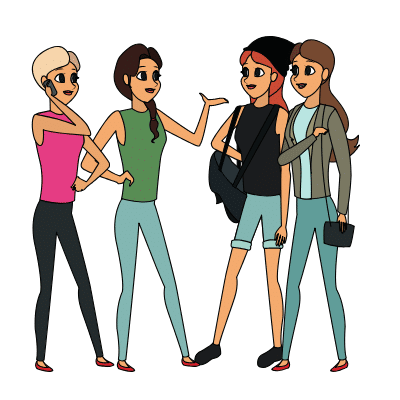
Overlearn. Just don’t focus only on exams. Students often stop studying when they think they know the material well enough to pass the test. However, don’t just stop there.
Of course, you need to think from the exam perspective. But more importantly, you need to think from the memory-perspective!
Unless you have mastery on a subject, there is every chance that you get confused about it in future, resulting in loss of the information from the memory.
If carefully managed, a new activity can boost memory and previous learning. For example, a debate between you and your classmate about the points discussed by your lecturer in the class. This will boost memory.
Once you finished learning, go beyond thinking about it. Do something with what you learned. This will improve memory.
For example, you can try applying some concepts you learned in your sociology, psychology, or even economics class in your family.
At any cost, avoid retroactive inhibition – a new or unrelated activity should not interfere with previous learning, inhibiting it.
28. The Long-Term Memory Technique – Put things into your long-term memory

You need to escape from the short-term memory trap, first.
If you think you have studied everything and keep your books down after 1 round of reading, you are most likely to fall into the short-term memory trap.
Short-term memory can decay after a few minutes, and it rarely lasts more than several hours. A short review within minutes or hours of a study session can move material from short-term memory into long-term memory. That quick mini-review can save you hours of study time when exams roll around.
29. The Revision Technique – Use it before you lose it.

This is the most important technique among all.
Even information stored in long-term memory becomes difficult to recall if we don’t use it regularly.
To remember something, access it a lot.
Read it, write it, speak it, listen to it, apply it—find some way to make contact with the material regularly.
Each time you do that, you widen the neural pathway to the material and make it easier to recall the next time.
30. The Stimulation Memory Technique – Remember something else

When you are stuck and can’t remember something you know you know, remember something else that is related to it.
If you cannot recall specific facts, remember the example the instructor used during her lecture.
Information is stored in the same area of the brain as similar information. You can unblock your recall by stimulating that area of your memory.
31. The Relaxing Memory Technique – Remember more by relaxing

Did you ever find any difficulty in recalling information during an exam?
Most of us face this issue. We forget information when we are under stress. When we are nervous, our memory won’t work properly.
Often you could recite the same facts later when you are relaxed.
Yes, a relaxed mind can remember more. Stress kills memory. So learn to relax.
32. The Healthy Lifestyle Technique – Eat food which stimulates the brain cells

While the above are memory techniques, we also advise you to follow a healthy lifestyle to improve your memory.
Eat right, sleep well, and enjoy your life.
Exercise regularly.
Remember that a healthy mind resides in a healthy body.
Do you wish to know what are foods which are good for your brain and memory?
Here is the list – Fatty fish, green vegetables, broccoli, pure chocolate, nuts, and berries. Taking Omega 3 fatty acid supplements (as seen in sea fish) may also help.
33. The Never-Forget Attitude Technique – Adopt the attitude that you never forget.

Beware of your attitudes.
People who think history is boring tend to have difficulty remembering history. People who
believe math is difficult tend to have difficulty recalling mathematical formulas. Notice these attitudes in you and be aware of them. It might be blocking your memory power.
We remember what we find interesting. If you think a subject is boring, remember,
that everything is related to everything else. Look for connections.
The negative self-talk like “I never remember anything, I’ve always had a poor memory” will further diminish your memory power.
Adopt an attitude that says, “I never forget anything. All I have to do is find where I stored it.”
Most importantly, remember to congratulate yourself when you remember.
Memory Techniques – At a glance
The purpose of the human brain is not to remember everything you see and hear 24*7, 365 days. That will result in a lot of unnecessary information to get piled up in your brain.
We forget – a lot. In fact, forgetting is a necessary part of remembering what’s important. Forgetting also helps us live with the pains and traumas of life.
The goal of this article is to help you store and retrieve useful information effectively.
Always ensure that you store only the information you need in future. Before learning something new in detail, get a basic idea first. See the big picture, and connect the new information with the already stored information in your brain.
Try to connect one information with another in different ways. The more connections you have about a thing, the better chances that you regain the information.
Use mnemonic techniques which work best for you. Combine the memory techniques – read, recite, draw, and write.
Revise regularly. Go through what you have studied the next day, the next week, the next month and so on.
Live a healthy life with proper sleep, rest, exercise, and food.
Believe strongly that you will develop amazing memory power. You will. A powerful memory will help you succeed in school, college, career, and life.
PS: Do you have any other useful mnemonics or other memory techniques? If yes, feel free to share those in the comment section below. That will help other readers.








Excellent ! Very Useful.
Thank you Ipsita for the comments. We are glad that you found the content useful. All the best!
Highly thankful, commendable work you have done and helped us alot..keep it up.
Very sincere efforts from your side.. We feel real efforts which is really meant for uplifting others.. May your ideas help more and more people.
We are incredibly grateful that you took the time out to leave us this note. Problem-solving is the top priority of ClearIAS. We feel really happy if our services help uplifting others. It’s users like you that make our job wonderful. All the best!
Best memory techniques.
Hi Yogendra, thank you for the positive comments. All the best!
Thanks Sir..I’m from Maharashtra..I found your approach to UPSC CSE most suitable than coaching classes in Delhi
Hi, We are really happy to hear that. All we try to do is – understand the real requirements of students, find the difficulties they face in learning, and solve it. Thank you, and all the best!
Indeed a very informative article with lots of constructive memory-boosting techniques. Many people suffer from low memory retention, since most of them as you mentioned, fail to see the big picture. Thanks for highlighting these points.
Hi Israraul, yes, understanding the big picture is the main step. Unfortunately, many teachers and coaching institutes fail to connect with the big picture. Happy to know that you found the article informative. All the best!
This article is really very useful and detailed.
I just love ClearIAS, it is a master idea and holy place for people who wants to learn. I would say everyone must spend time on ClearIAS regardless of their aspirations for IAS.
Thanks a lot Chintan! The team here at ClearIAS is thrilled to hear such good feedback. All the best!
Thanks for your amazing techniques
OMG this is amazing.. thank you so much
I think in short it is all about visual imagination of what you learn and associate it with related things and then recall it as much as you can.
Thanks sir,for clear guidance about memory boost
I practice almost half the technique here and thank you for more techniques.
Best memory technique I have ever read.
Thanks you so much
Hats of To Clear IAS app..From ur App I got confidence to Clear IAS Exam (Abt reading Skills and Memory skills helped me lot)..Lastly I am very Thankful To founder and Team workers..
It was amazing to read the article.. Seriously I always find difficult to remember the sequences of mughals but it now seems easy …thanks for the wonderful article
An Excellent article written for all. 33 Memory Techniques a must for all students and especially for those who write competitive exams. Thank you for the wonderful article. Good work Clearias team.
Very deeply analysed techniques supported with examples, feeling more motivated and stress free. Thankyou so much ClearIAS, this will definitely change mindsets of many. 😊
It is very helpful and clearIAS team really helped all the IAs aspirants to learn in the best way possible…
Thank you…
Thanks all of you make it better for new aspirant and student to focus their goals. and again thanx every one.
WHAT MEMORY TECHNIQUE WOULD BE SUITABLE FOR CURRENT AFFAIRS?
OR WHAT IS THE BEST WAY TO REMEMBER FACTS ABOUT CURRENT AFFAIRS?
NICE AND UNIQUE TECHNIQUES FOR REMEMBERING
It is excellent and Inspirational.Thanks a lot sir. Your right guidance will be of immense aspirations for us.
Super… Wow umbrella type…. You are great.
Thanq sir …this was much needed information about memory boost 😊
Really awesome sir 🤩🤩🤩🤩
it gave me a boost ,thank you clearias.com
Excellent but please update the mnemonic My very excellent mother just served us nine pizzas to the new one My Very excellent mother just served us nuts because pizza refer to Pluto but Pluto is now dwarf planet .
PS : Also change nine planets to eight
Hoping for the best
Definitely these type of Memory Techniques will be helpful to us. Thank you 🙏🙏
Thanks it’s working
You can also remember the days of each month by using the knuckles of your hands, the lifted parts stand for months with 31 days while the depressions stand for 30 days . You just need to remember the order of the months and recite it while counting your knuckles
You can also remember the days of each month by using the knuckles of your hands, the lifted parts stand for months with 31 days while the depressions stand for 30 days . You just need to remember the order of the months and recite it while counting your knuckles
Suoer
Where i can learn all memory techniques like The Stimulation Memory Technique ?
Thankyou Clear IAS….It is really helpful .
The Techniques are so genuine and useful .
I have seen many websites that give techniques to study. But this one is unique making me understand the techniques clearly. Thaning the creator so much…
Wonderful article based on different techniques which majority of us can relate to,
This article opened different block chains of memory in my brain. Thank you so much !!!
Very interesting and useful